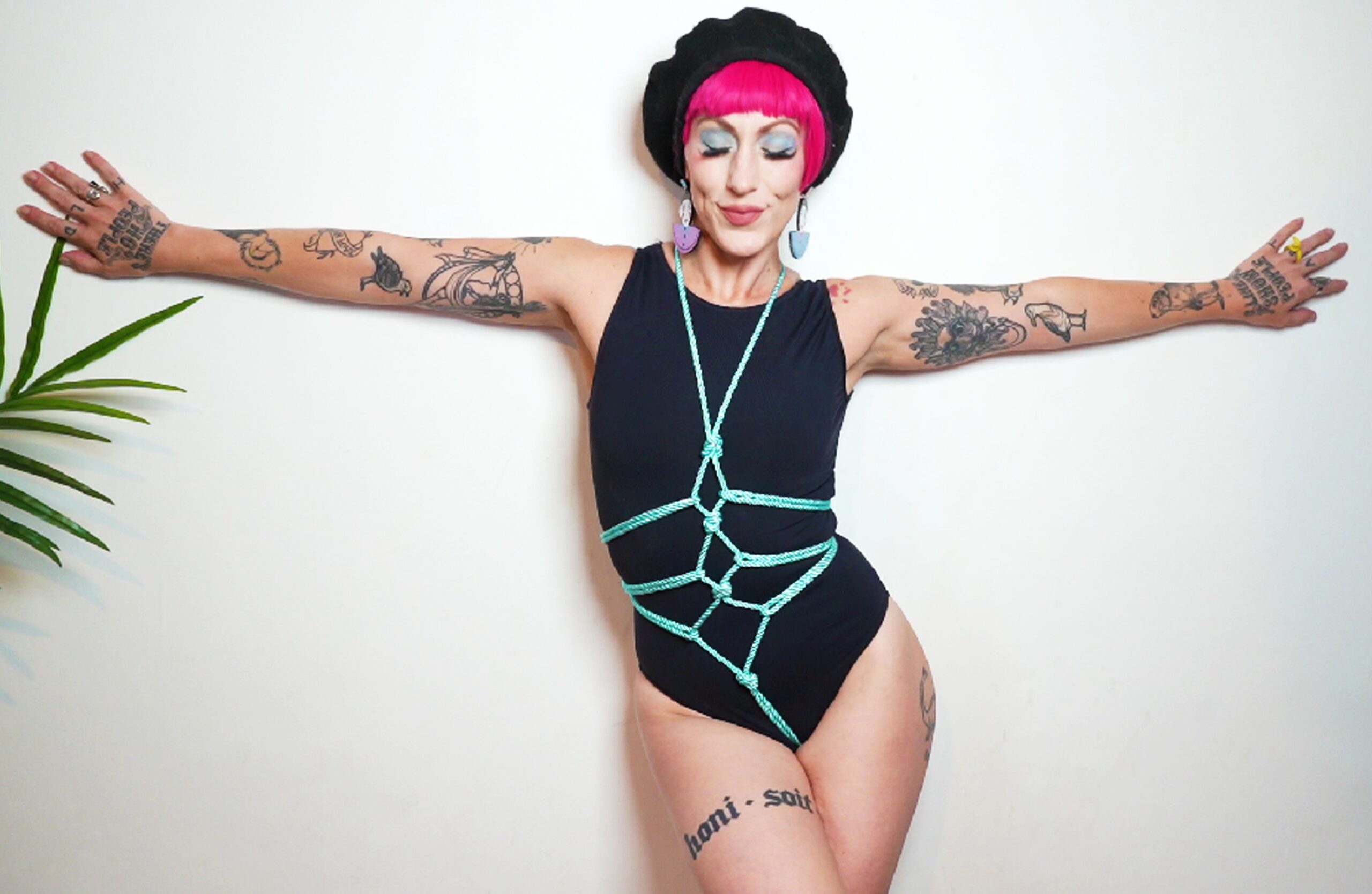Xenogenders
Xenogenders encompass a spectrum of gender identities that exist outside the traditional binary categories of male and female. These identities are often self-defined and can be deeply personal, reflecting unique experiences and understandings of gender. Exploring xenogenders allows us to expand our understanding of gender diversity and recognize the vast spectrum of ways individuals express their gender.

Definition and Characteristics
Xenogenders are a diverse range of gender identities that fall outside the conventional categories of male and female. Individuals who identify as xenogender may experience their gender as distinct from, or entirely separate from, these binary options. These identities can be fluid, evolving over time, and may encompass concepts such as non-human genders, fictional genders, or unique combinations of traditional gender traits.
Characteristics of xenogenders are highly individualistic and vary greatly from person to person. Some individuals may have strong preferences for specific pronouns or terminology, while others may not. Expression of xenogender can manifest in various ways, including clothing, name choices, art, and online communities.
It is crucial to remember that understanding and respecting individual gender identities, including xenogenders, requires empathy, open-mindedness, and a willingness to learn about diverse experiences.
Examples of Xenogenders
Examples of xenogenders in English include but are not limited to: neopronouns, genderfaun (identifying as a faun), kit (a gender that feels inherently young), and voidgender (feeling a lack of gender identity).
These are just a few examples, and many other unique and diverse xenogenders exist within the community.
Experiences of Xenogender Individuals
Xenogender individuals often face challenges due to societal norms and limited understanding surrounding non-binary genders. They may encounter prejudice, discrimination, or lack of support from family, friends, or even healthcare providers.
Finding acceptance and belonging can be particularly difficult for those with unique xenogender identities. Many seek solace and connection within online communities where they can share experiences, find allies, and explore their gender expressions freely.
Access to accurate information about xenogenders and resources for navigating the complexities of gender identity is crucial. Continued education and advocacy are essential to create a more inclusive and accepting society for all gender identities.
Ultimately, understanding and respecting xenogender experiences involves recognizing the validity of individual self-identification and creating safe spaces where people can authentically express their gender without fear of judgment or harm.
Individual Gender Expressions
Gender identity is a complex and deeply personal aspect of who we are. While traditional Western societies often categorize gender as male or female, many individuals experience their gender in ways that fall outside these binary categories. These individuals may identify as non-binary, agender, bigender, or explore identities encompassed by the term “xenogender.” Xenogenders encompass a vast spectrum of gender identities that exist beyond the traditional male/female binary.
Beyond the Binary: Exploring Non-Binary Identities
Xenogenders are a diverse range of gender identities that fall outside the conventional categories of male and female. Individuals who identify as xenogender may experience their gender as distinct from, or entirely separate from, these binary options. These identities can be fluid, evolving over time, and may encompass concepts such as non-human genders, fictional genders, or unique combinations of traditional gender traits.
Characteristics of xenogenders are highly individualistic and vary greatly from person to person. Some individuals may have strong preferences for specific pronouns or terminology, while others may not. Expression of xenogender can manifest in various ways, including clothing, name choices, art, and online communities.
It is crucial to remember that understanding and respecting individual gender identities, including xenogenders, requires empathy, open-mindedness, and a willingness to learn about diverse experiences.
Gender Fluidity and Non-Conformity
Exploring xenogender and individual gender expressions allows us to broaden our understanding of the spectrum of human identity. Gender fluidity, a concept central to this exploration, recognizes that gender is not static but can shift and evolve over time. Individuals may experience their gender differently at various points in their lives or even simultaneously hold multiple identities.
Non-conformity plays a significant role in this journey of self-discovery. It challenges societal norms and expectations surrounding gender expression, allowing individuals to define and express their gender authentically, regardless of traditional binary constraints.
This non-conformity can manifest in various ways, from clothing choices and hairstyles to pronoun usage and social interactions. It empowers individuals to embrace their unique identities and challenge the limitations imposed by societal norms.
Ultimately, fostering a society that embraces gender diversity requires empathy, respect, and a willingness to listen to and understand individual experiences. By celebrating the fluidity and non-conformity within gender expression, we create a more inclusive and equitable world for all.
Language and Self-Expression
Xenogenders encompass a spectrum of gender identities that exist outside the traditional binary categories of male and female. These identities are often self-defined and can be deeply personal, reflecting unique experiences and understandings of gender. Exploring xenogenders allows us to expand our understanding of gender diversity and recognize the vast spectrum of ways individuals express their gender.
Xenogenders are a diverse range of gender identities that fall outside the conventional categories of male and female. Individuals who identify as xenogender may experience their gender as distinct from, or entirely separate from, these binary options. These identities can be fluid, evolving over time, and may encompass concepts such as non-human genders, fictional genders, or unique combinations of traditional gender traits.
Characteristics of xenogenders are highly individualistic and vary greatly from person to person. Some individuals may have strong preferences for specific pronouns or terminology, while others may not. Expression of xenogender can manifest in various ways, including clothing, name choices, art, and online communities.
It is crucial to remember that understanding and respecting individual gender identities, including xenogenders, requires empathy, open-mindedness, and a willingness to learn about diverse experiences.
Examples of xenogenders in English include but are not limited to: neopronouns, genderfaun (identifying as a faun), kit (a gender that feels inherently young), and voidgender (feeling a lack of gender identity).

These are just a few examples, and many other unique and diverse xenogenders exist within the community.
Xenogender individuals often face challenges due to societal norms and limited understanding surrounding non-binary genders. They may encounter prejudice, discrimination, or lack of support from family, friends, or even healthcare providers.
Finding acceptance and belonging can be particularly difficult for those with unique xenogender identities. Many seek solace and connection within online communities where they can share experiences, find allies, and explore their gender expressions freely.
Access to accurate information about xenogenders and resources for navigating the complexities of gender identity is crucial. Continued education and advocacy are essential to create a more inclusive and accepting society for all gender identities.
Ultimately, understanding and respecting xenogender experiences involves recognizing the validity of individual self-identification and creating safe spaces where people can authentically express their gender without fear of judgment or harm.
Cultural Perspectives on Gender
Throughout history, cultures have held diverse perspectives on gender. While some societies adhere to strict binary classifications of male and female, others recognize a wider spectrum of gender identities and expressions. These cultural variations highlight the fluidity and complexity of gender as a social construct, shaped by societal norms, beliefs, and traditions.
Varying Definitions and Societal Norms
Cultural perspectives on gender vary widely across the globe. Some cultures adhere to strict binary classifications of male and female, emphasizing distinct roles and expectations for each gender. Others recognize a broader spectrum of gender identities and expressions, with some societies even having third genders or recognizing multiple gender identities within their social structures.
These diverse perspectives reflect the complex interplay of cultural values, beliefs, and societal norms that shape understandings of gender. For example, in some indigenous cultures, individuals may identify as having multiple genders or spirits, transcending the limitations of a binary system.
In other cultures, gender roles and expressions may be more fluid, allowing for greater flexibility and diversity in how individuals present themselves. This fluidity can manifest in various ways, such as through clothing choices, adornment, and social interactions.
Understanding these diverse cultural perspectives is essential for promoting respect and inclusivity. It challenges us to recognize that gender is not a universal concept but rather a social construct influenced by cultural context.
Indigenous and Global Perspectives
Cultural perspectives on gender vary widely across the globe. Some cultures adhere to strict binary classifications of male and female, emphasizing distinct roles and expectations for each gender. Others recognize a broader spectrum of gender identities and expressions, with some societies even having third genders or recognizing multiple gender identities within their social structures.
- Indigenous cultures often have complex and nuanced understandings of gender that extend beyond the Western binary.
- In many indigenous communities, there are recognized gender roles and identities that differ from those found in mainstream societies.
- These perspectives may involve multiple genders, fluid gender expressions, or spiritual connections to nature that influence gender identity.
Exploring these diverse cultural perspectives can broaden our understanding of gender as a multifaceted concept shaped by social and cultural contexts. It encourages us to move beyond rigid binary classifications and embrace the richness and diversity of human experience.
The Evolution of Gender Concepts
Cultural perspectives on gender have evolved significantly over time, reflecting changing societal norms, values, and understandings of identity.
In many traditional cultures, gender roles were strictly defined, with clear expectations for men and women in terms of behavior, dress, occupation, and social interactions. These binary classifications often reinforced patriarchal structures, limiting opportunities and freedoms for individuals who did not conform to prescribed norms.
However, as societies have become more interconnected and diverse, there has been a growing recognition of the fluidity and complexity of gender identity. Challenges to traditional gender roles have emerged from various movements and social changes, including feminism, LGBTQ+ rights activism, and increasing awareness of non-binary identities.
The evolution of language reflects these changing perspectives. Terms like “gender identity” and “non-binary” have entered mainstream discourse, signaling a shift towards greater inclusivity and recognition of diverse gender experiences.
Technological advancements, particularly the rise of the internet and social media, have also played a role in expanding our understanding of gender diversity. Online communities provide spaces for individuals to connect, share experiences, and explore their identities freely, regardless of geographical limitations or societal pressures.
Challenges and Advocacy
Exploring xenogender and individual gender expressions requires navigating a complex landscape of challenges and advocacy. Xenogender individuals often face prejudice, discrimination, and a lack of understanding from family, friends, and society at large.
Creating a more inclusive world demands continuous education, empathy, and the dismantling of harmful stereotypes. Advocacy efforts are crucial for pushing for legal recognition of gender identity, ensuring access to healthcare that is sensitive to diverse needs, and promoting equal opportunities for all individuals, regardless of their gender expression.
Misunderstanding and Discrimination
Xenogender individuals often face prejudice, discrimination, and a lack of understanding from family, friends, and society at large. These challenges can stem from deeply ingrained societal norms and misconceptions about gender identity.
- Misunderstandings: Many people lack awareness and understanding of what xenogenders are and how they differ from traditional binary genders. This can lead to assumptions, stereotypes, and insensitive language, creating an environment where xenogender individuals feel marginalized and invalidated.
- Discrimination: Xenogender individuals may experience discrimination in various aspects of life, including employment, housing, healthcare, and education. They may be denied opportunities, treated unfairly, or subjected to harassment based on their gender identity.
Advocacy plays a vital role in addressing these challenges and promoting equality for xenogender individuals.
Continued education is essential to break down misconceptions and foster understanding. Promoting open and honest conversations about gender identity, sharing diverse perspectives, and creating safe spaces for dialogue are crucial steps towards building a more inclusive society.
Creating Inclusive Spaces
Creating inclusive spaces requires conscious effort and a commitment to fostering an environment where everyone feels safe, respected, and valued. This involves challenging discriminatory attitudes, educating oneself about diverse gender identities, and actively promoting inclusivity in all aspects of life.
Here are some ways to contribute to creating more inclusive spaces:
- Use inclusive language: Be mindful of the language you use and avoid making assumptions about someone’s gender identity. Use gender-neutral terms when appropriate, and respect individuals’ preferred pronouns.
- Educate yourself: Take the time to learn about different gender identities and expressions. Read articles, listen to podcasts, and engage with resources from reputable organizations that advocate for LGBTQ+ rights.
- Create safe spaces: Foster environments where people feel comfortable expressing themselves authentically without fear of judgment or discrimination. Encourage open and honest conversations about gender identity, and be an ally to those who are marginalized.
- Challenge prejudice: Speak up against discriminatory language and behavior whenever you encounter it. Educate others about the harm that prejudice causes and advocate for policies that promote equality.
By actively working towards creating inclusive spaces, we can build a society where everyone feels accepted, respected, and valued for who they are.
Resources and Support Networks
Exploring xenogender and individual gender expressions requires navigating a complex landscape of challenges and advocacy. Xenogender individuals often face prejudice, discrimination, and a lack of understanding from family, friends, and society at large.
Creating a more inclusive world demands continuous education, empathy, and the dismantling of harmful stereotypes. Advocacy efforts are crucial for pushing for legal recognition of gender identity, ensuring access to healthcare that is sensitive to diverse needs, and promoting equal opportunities for all individuals, regardless of their gender expression.
Xenogender individuals often face prejudice, discrimination, and a lack of understanding from family, friends, and society at large. These challenges can stem from deeply ingrained societal norms and misconceptions about gender identity.
- Misunderstandings: Many people lack awareness and understanding of what xenogenders are and how they differ from traditional binary genders. This can lead to assumptions, stereotypes, and insensitive language, creating an environment where xenogender individuals feel marginalized and invalidated.
- Discrimination: Xenogender individuals may experience discrimination in various aspects of life, including employment, housing, healthcare, and education. They may be denied opportunities, treated unfairly, or subjected to harassment based on their gender identity.
Advocacy plays a vital role in addressing these challenges and promoting equality for xenogender individuals.
Continued education is essential to break down misconceptions and foster understanding. Promoting open and honest conversations about gender identity, sharing diverse perspectives, and creating safe spaces for dialogue are crucial steps towards building a more inclusive society.
Creating inclusive spaces requires conscious effort and a commitment to fostering an environment where everyone feels safe, respected, and valued. This involves challenging discriminatory attitudes, educating oneself about diverse gender identities, and actively promoting inclusivity in all aspects of life.
Here are some ways to contribute to creating more inclusive spaces:
- Use inclusive language: Be mindful of the language you use and avoid making assumptions about someone’s gender identity. Use gender-neutral terms when appropriate, and respect individuals’ preferred pronouns.
- Educate yourself: Take the time to learn about different gender identities and expressions. Read articles, listen to podcasts, and engage with resources from reputable organizations that advocate for LGBTQ+ rights.
- Create safe spaces: Foster environments where people feel comfortable expressing themselves authentically without fear of judgment or discrimination. Encourage open and honest conversations about gender identity, and be an ally to those who are marginalized.
- Challenge prejudice: Speak up against discriminatory language and behavior whenever you encounter it. Educate others about the harm that prejudice causes and advocate for policies that promote equality.

By actively working towards creating inclusive spaces, we can build a society where everyone feels accepted, respected, and valued for who they are.
Resources and support networks play a crucial role in empowering xenogender individuals to navigate the challenges they face. These resources can provide information, guidance, community, and advocacy to help individuals understand their identities, connect with others who share similar experiences, and access essential support services.
- Online Communities: Xenogender individuals often find solace and connection within online communities dedicated to sharing experiences, offering support, and creating safe spaces for self-expression. These platforms can provide valuable resources, information, and a sense of belonging.
- Advocacy Organizations: Various organizations advocate for the rights and well-being of LGBTQ+ individuals, including those who identify as xenogender. These organizations offer legal assistance, educational materials, and support services to empower individuals and challenge discrimination.
- Therapists and Counselors: Finding a therapist or counselor who is experienced in working with gender diverse individuals can be invaluable for exploring one’s identity, processing emotional challenges, and developing coping strategies.
Accessing these resources can empower xenogender individuals to navigate their identities with greater confidence and support.
soft dom sex
Visit now for full reading
See the blog post for more info
- Why Are My Lips Dry After Lip Filler - November 1, 2025
- What Is Temple Filler - October 29, 2025
- Weed Seltzers With The Best Packaging - October 26, 2025
